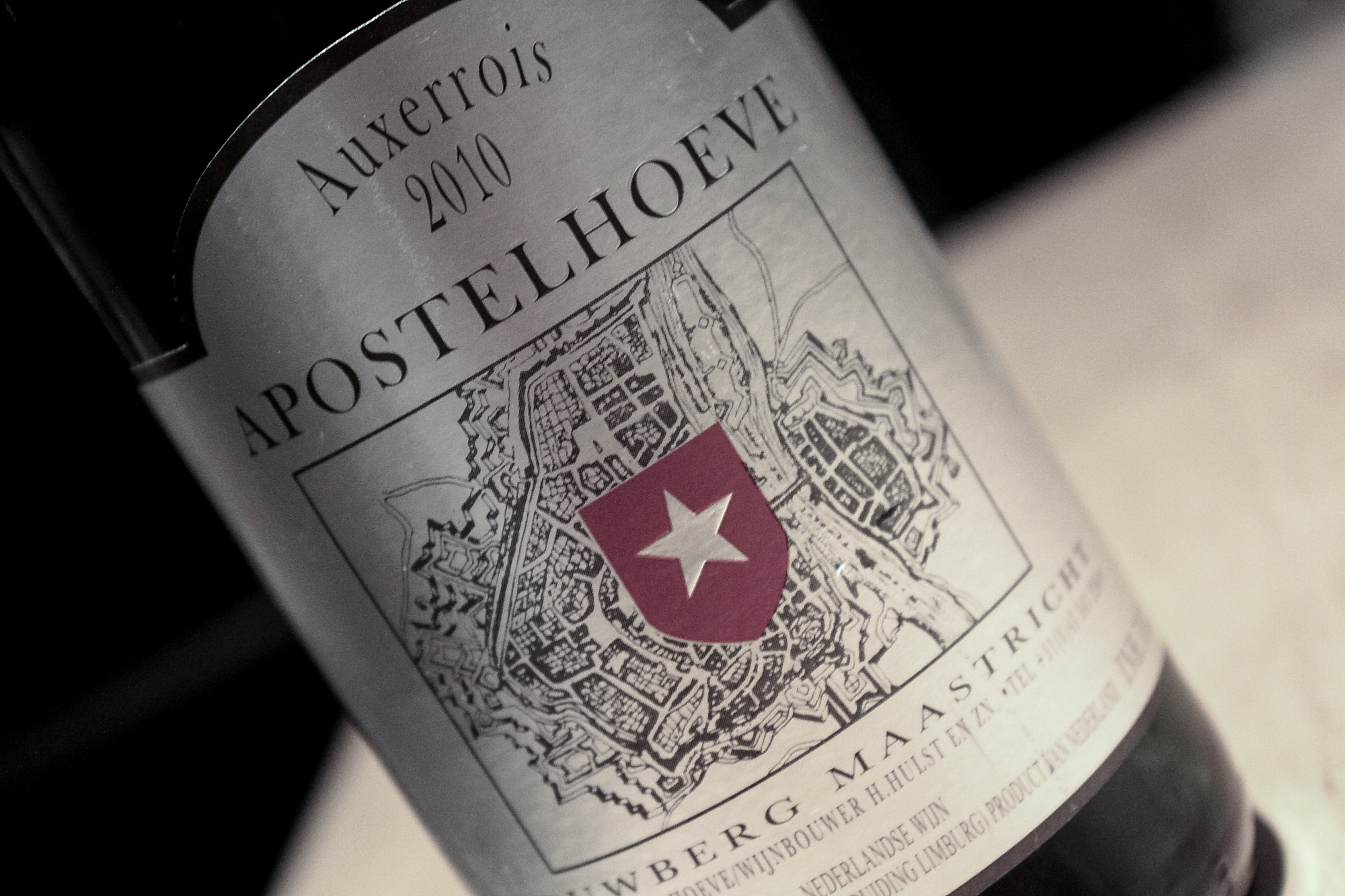Apostelhoeve, Louwberg Maastricht, Auxerrois 2010
Considering how well regarded it is Pinot is a fickle, confusing and rather unstable friend. With that statement I don't mean the wine but rather the grape - you stop watching it closely for just a second and, woosh!, does it mutate into something else. It can be so deceiving it will even confuse you when the mutation is over and it has become something else. Take the white Auxerois variety for instance that descends from Pinot: the first South African Chardonnay cuttings were actually Auxerois and when you think you drink an Alsace Pinot Blanc you could be fooled by 100% Auxerois.

The wine you are looking at here is more straightforward in that, as far as we know, it really is made from Auxerois - but with a twist still as it comes from the Netherlands, a wine region with so small a production that even many Dutch have not yet sampled its wine.
Before we come to the Dutch part of the story a few words about Auxerois. It is most important in the Alsace where it actually is more widely planted than any member of the Pinot family. However, it is not seen as a great wine there and often blended into Pinot Blanc - in fact you can sell a bottle of 100% Auxerois and label it Pinot Blanc. The Germans have more love for it and while it is not widely planted you can get good Auxerois from Baden. Stylistically it is not too dissimilar from Pinot Blanc but has a reputation for being a little flabby if not carefully managed in the vineyard - German specimens I have tried where quite good, but what about the Dutch version?
Well, not bad either, is the short summary. Our Auxerois - a gift from a friend who lives in The Hague - comes from the Louwberg, a vineyard in a relatively warm spot near Maastricht. It has aromas of grass, herbs and vegetables - hay, aniseedy fennel, kohlrabi and flowers (the serious flowery touch as opposed to the playful one as my notes say), plus a bit of bitter candy. On the tongue it is at first a little shy but eventually shows more flavour: freshly cut kohlrabi for instance, a little mineral, some bitter vegetable and honey sweetness in the finish. The wine is quite light but still retains some fresh acidity embedded in buttery roundness. Not a miracle of depth or character but very nice, enjoyable drinking that is also quite food friendly - not fickle at all!

Comments
You do not mention one major
You do not mention one major producer of this grape: Luxembourg, where 178 ha or 15% of the total surface under vine are planted with Auxerrois. I moved to Luxembourg 30 years ago to work there and that is when I came to know the grape. Auxerrois used to be my favourite wine with white asparagus. Now I am retired and live in the UK where Auxerrois and white asparagus are both unavailable.
But I travel over regularly, next time will be early June.
In reply to You do not mention one major by Ulrich Schol
Luxembourg
You are correct, I did not mention Luxembourg - simply as I never had an Auxerois from there. The Auxerois vineyard area seems roughly comparable to Germany but I have never seen a wine from Luxembourg in an English wine shop; some London restaurants offer Rivaner or Riesling, but even that tends to be a rare event.
I can see why you like Auxerois with white asparagus; I often have it with Pinot Blanc which is easier to source. You can get white asparagus in London at some food markets and upmarket department stores but not sure about the prices or how fresh it would be. I really miss it. Enjoy Luxembourg!